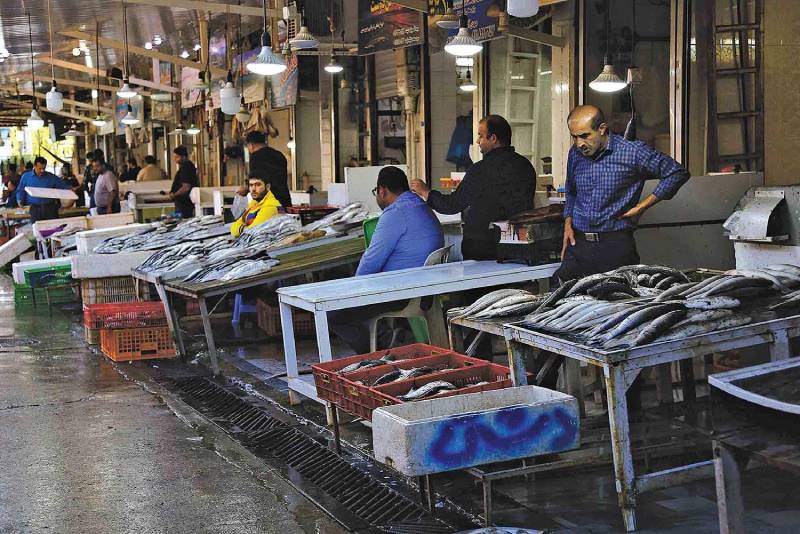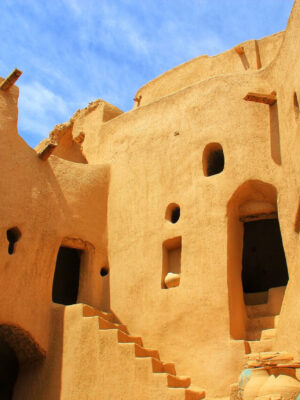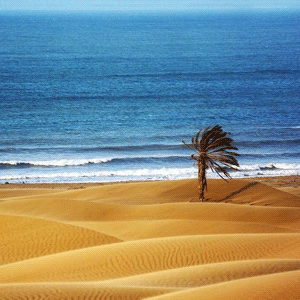Bushehr
If you plan to travel to Iran in autumn or winter, be sure to visit the beautiful province of Bushehr. This province is located in the south of Iran and next to the Persian Gulf and has very attractive natural and cultural sights. Stay with us to introduce you to several Bushehr attractions.
Specifications of Bushehr
Bushehr is a port city in southwestern Iran. The population of this city is about 1 million people. This port is located at an altitude of 18 meters above sea level in the coastal region of the Persian Gulf and has a warm semi-desert climate.
This city is the 17th largest province of Iran, which is of special importance due to its strategic location on the Persian Gulf coast, maritime exports and imports, fishing industry, oil and gas reserves, agriculture and palm groves, and the existence of a nuclear power plant.
The oldest signs of the history of this city date back to the Elamite period. This region was in the Sassanid territory and the ancient port of Siraf was the most important commercial port in this period.
The difference in temperature in summer and winter is relatively large and depends on various factors. In general, Bushehr province is warm for 6 months of the year and has a moderate temperature in the other months.
Bushehr Old Bazaar
This bazaar is one of the most prosperous markets in Bushehr registered as one of the national heritage of Iran and has attractive architecture.
Bushehr’s old bazaar dates back to the Afsharid period. During the Qajar Period, the old market of Bushehr became one of the economic hubs of the country. Also various countries such as Britain, Germany, and Portugal established consulates in the market for ease of trade. During the reign of Nasser al-Din Shah, the old bazaar of Bushehr was the center of commercial and cultural communication among people of different classes.

Bushehr fish market is about 50 years old and is relatively small. t may not be easy to wander, but if you are a fan of shrimp and a variety of fresh fish, you will enjoy visiting this market.
Jashak Salt Dome
Jashak region is considered mountainous and due to special topographic conditions, it lacks any freshwater springs, water sources, or wells. Only salt caves and salt springs exist in large numbers. Parts of the dome that contains salt does not have any vegetation. Of course, most of the layers of the mountain are limestone, which rises from the salt mountain.
Salt crystals and stalactites and stalagmites formed in different parts of the salt dome over millions of years. Salt domes are important factors in the salinity of water and soil resources. For this reason, there is usually no vegetation around them or only plants that are resistant to salty water and soil.

Another attraction of the Jashak Salt Dome is the salt springs. These springs flow salty water from the depths of the earth to its surface to preserve the life of the region. If the activity of these springs is stopped, all the beauties of Jashak will be destroyed. These springs are located in caves and valleys and are one of the spectacular attractions of Jashak.
Siraf Rock Cemetery
In the past people dug rock tombs in the Siraf Mountains to collect water and then later used as individual or family graves due to emergencies such as earthquakes or plague and the need for the rapid burial of the dead.
The tombs of this cemetery are about 2 meters long, 1.5 meters wide and about 60 centimeters deep and made of mortar for the outer covering of the grave.

Gur Dokhtar
Near Borazjan, in Bushehr province, there is a historical monument that is very similar to the famous tomb of Cyrus the Great. Of course, its subtle elegance shows itself at first glance, stones with simple cuts and carvings.
The architect made whole building of 24 pieces of stone in different dimensions. In the construction of this building, like other structures built by Achaemenid architects, no mortar was used. At the top of this tomb, there is a part resembling a frame. This was probably the location of an inscription related to it.
Gur Dokhtar is a rectangular building with a total height of 4.45 meters, on which there is a gabled roof, and in its construction, large cream-colored boulders have been used.
According to the archaeologists who studied this building, there is no doubt that its construction dates back to the Achaemenid era, but there are different theories about who is buried here. One of the most plausible theories is that this is the tomb of Cyrus III.
Nasuri Castle
This fort belongs to the Nasuri family, the ruler of Bushehr ordered to build it. Nasuri Castle is more than 200 years old and dates back to the early Qajar period.
The building has two courtyards, private and public. Also, 18 very beautiful paintings of Shahnameh of Ferdowsi are engraved on the west porch of the castle.
Persian Gulf Marine Museum
The architect built this museum building in 1858 and was originally the building of the British Consulate. After the end of World War II, the museum building was handed over to the navy. Historical artifacts such as old maps and Persian and Latin typewriters of former ships are housed in this museum. Also such as medical equipment of military ships and paintings of nautical knots can be seen in the museum complex.
In the courtyard, you can see submarines that belong to different historical periods, especially the Qajar period. People placed the warships and military boats in this area. One of the most interesting parts of the museum is the 110-year-old ship Persepolis. This ship is the first modern warship of the Iranian navy in the Persian Gulf. Germans gave it to Nasser al-Din Shah.
The old town of Bushehr
This historical town dates back to the reign of Nader Shah Afshar. At his time the port of Bushehr became important. Since then, its history of prosperity and development has continued. During the Zandieh period, due to its proximity to the capital of Iran, Shiraz, the importance of this port doubled.
The 38-hectare historical old town of Bushehr includes about a thousand houses. The old town is one of the most unique and beautiful towns in Iran. The peak of Bushehr’s flourishing dates back to the Qajar period. On that time Bushehr was considered the gateway for different nations to enter Iran.
Bushehr has a hot and humid climate most of the year. The excessive humidity and heat of erosion have caused the architects to build the old town in conflict with this feature and to reduce its effects.
For this reason, the old town alleys are very narrow and the buildings on both sides of the alleys are very tall. This height has made the alleys always shady and the sun does not shine directly on them. On the other hand, the narrow alleys allow air to flow in them and minimize the humidity.

This old town has unique buildings, including beautiful mansions from 250 years ago, consulates of different countries, religious centers such as mosques and churches, the old bazaar, and beautiful alleys.
If you travel to Iran in the colder months of the year, be sure to include Bushehr in your itinerary. For more information about Iran tours, contact Pasargad tours.
Bushehr
If you plan to travel to Iran in autumn or winter, be sure to visit the beautiful province of Bushehr. This province is located in the south of Iran and next to the Persian Gulf and has very attractive natural and cultural sights. Stay with us to introduce you to several Bushehr attractions.
Specifications of Bushehr
Bushehr is a port city in southwestern Iran. The population of this city is about 1 million people. This port is located at an altitude of 18 meters above sea level in the coastal region of the Persian Gulf and has a warm semi-desert climate.
This city is the 17th largest province of Iran, which is of special importance due to its strategic location on the Persian Gulf coast, maritime exports and imports, fishing industry, oil and gas reserves, agriculture and palm groves, and the existence of a nuclear power plant.
The oldest signs of the history of this city date back to the Elamite period. This region was in the Sassanid territory and the ancient port of Siraf was the most important commercial port in this period.
The difference in temperature in summer and winter is relatively large and depends on various factors. In general, Bushehr province is warm for 6 months of the year and has a moderate temperature in the other months.
Bushehr Old Bazaar
This bazaar is one of the most prosperous markets in Bushehr registered as one of the national heritage of Iran and has attractive architecture.
Bushehr’s old bazaar dates back to the Afsharid period. During the Qajar Period, the old market of Bushehr became one of the economic hubs of the country. Also various countries such as Britain, Germany, and Portugal established consulates in the market for ease of trade. During the reign of Nasser al-Din Shah, the old bazaar of Bushehr was the center of commercial and cultural communication among people of different classes.

Bushehr fish market is about 50 years old and is relatively small. t may not be easy to wander, but if you are a fan of shrimp and a variety of fresh fish, you will enjoy visiting this market.
Jashak Salt Dome
Jashak region is considered mountainous and due to special topographic conditions, it lacks any freshwater springs, water sources, or wells. Only salt caves and salt springs exist in large numbers. Parts of the dome that contains salt does not have any vegetation. Of course, most of the layers of the mountain are limestone, which rises from the salt mountain.
Salt crystals and stalactites and stalagmites formed in different parts of the salt dome over millions of years. Salt domes are important factors in the salinity of water and soil resources. For this reason, there is usually no vegetation around them or only plants that are resistant to salty water and soil.

Another attraction of the Jashak Salt Dome is the salt springs. These springs flow salty water from the depths of the earth to its surface to preserve the life of the region. If the activity of these springs is stopped, all the beauties of Jashak will be destroyed. These springs are located in caves and valleys and are one of the spectacular attractions of Jashak.
Siraf Rock Cemetery
In the past people dug rock tombs in the Siraf Mountains to collect water and then later used as individual or family graves due to emergencies such as earthquakes or plague and the need for the rapid burial of the dead.
The tombs of this cemetery are about 2 meters long, 1.5 meters wide and about 60 centimeters deep and made of mortar for the outer covering of the grave.

Gur Dokhtar
Near Borazjan, in Bushehr province, there is a historical monument that is very similar to the famous tomb of Cyrus the Great. Of course, its subtle elegance shows itself at first glance, stones with simple cuts and carvings.
The architect made whole building of 24 pieces of stone in different dimensions. In the construction of this building, like other structures built by Achaemenid architects, no mortar was used. At the top of this tomb, there is a part resembling a frame. This was probably the location of an inscription related to it.
Gur Dokhtar is a rectangular building with a total height of 4.45 meters, on which there is a gabled roof, and in its construction, large cream-colored boulders have been used.
According to the archaeologists who studied this building, there is no doubt that its construction dates back to the Achaemenid era, but there are different theories about who is buried here. One of the most plausible theories is that this is the tomb of Cyrus III.
Nasuri Castle
This fort belongs to the Nasuri family, the ruler of Bushehr ordered to build it. Nasuri Castle is more than 200 years old and dates back to the early Qajar period.
The building has two courtyards, private and public. Also, 18 very beautiful paintings of Shahnameh of Ferdowsi are engraved on the west porch of the castle.
Persian Gulf Marine Museum
The architect built this museum building in 1858 and was originally the building of the British Consulate. After the end of World War II, the museum building was handed over to the navy. Historical artifacts such as old maps and Persian and Latin typewriters of former ships are housed in this museum. Also such as medical equipment of military ships and paintings of nautical knots can be seen in the museum complex.
In the courtyard, you can see submarines that belong to different historical periods, especially the Qajar period. People placed the warships and military boats in this area. One of the most interesting parts of the museum is the 110-year-old ship Persepolis. This ship is the first modern warship of the Iranian navy in the Persian Gulf. Germans gave it to Nasser al-Din Shah.
The old town of Bushehr
This historical town dates back to the reign of Nader Shah Afshar. At his time the port of Bushehr became important. Since then, its history of prosperity and development has continued. During the Zandieh period, due to its proximity to the capital of Iran, Shiraz, the importance of this port doubled.
The 38-hectare historical old town of Bushehr includes about a thousand houses. The old town is one of the most unique and beautiful towns in Iran. The peak of Bushehr’s flourishing dates back to the Qajar period. On that time Bushehr was considered the gateway for different nations to enter Iran.
Bushehr has a hot and humid climate most of the year. The excessive humidity and heat of erosion have caused the architects to build the old town in conflict with this feature and to reduce its effects.
For this reason, the old town alleys are very narrow and the buildings on both sides of the alleys are very tall. This height has made the alleys always shady and the sun does not shine directly on them. On the other hand, the narrow alleys allow air to flow in them and minimize the humidity.

This old town has unique buildings, including beautiful mansions from 250 years ago, consulates of different countries, religious centers such as mosques and churches, the old bazaar, and beautiful alleys.
If you travel to Iran in the colder months of the year, be sure to include Bushehr in your itinerary. For more information about Iran tours, contact Pasargad tours.





















